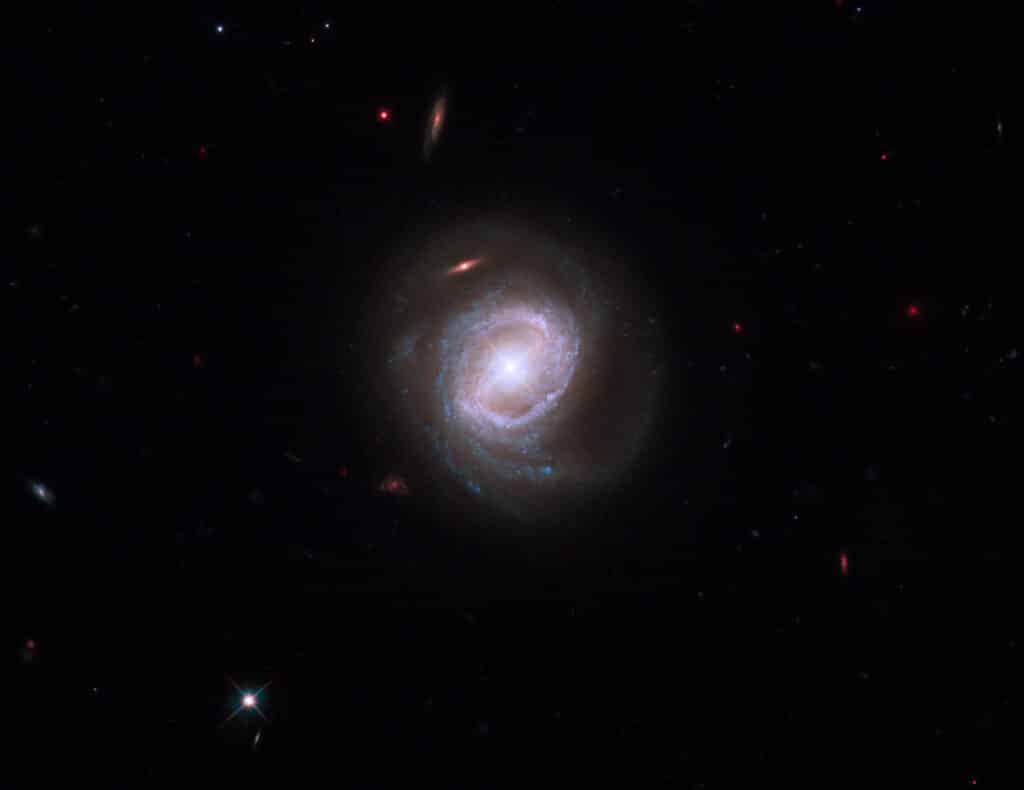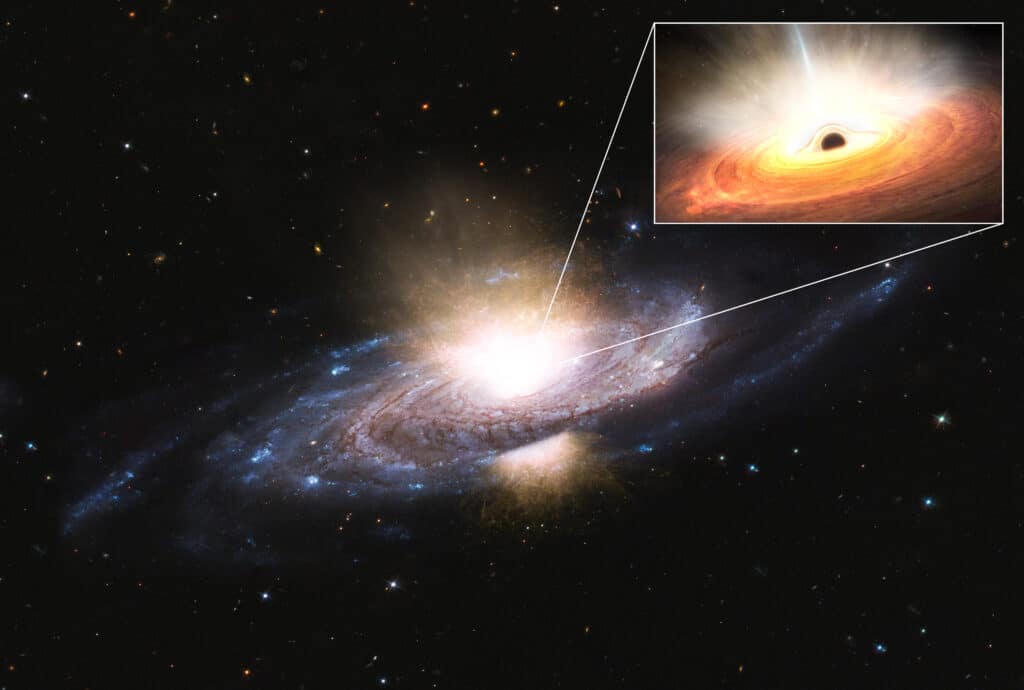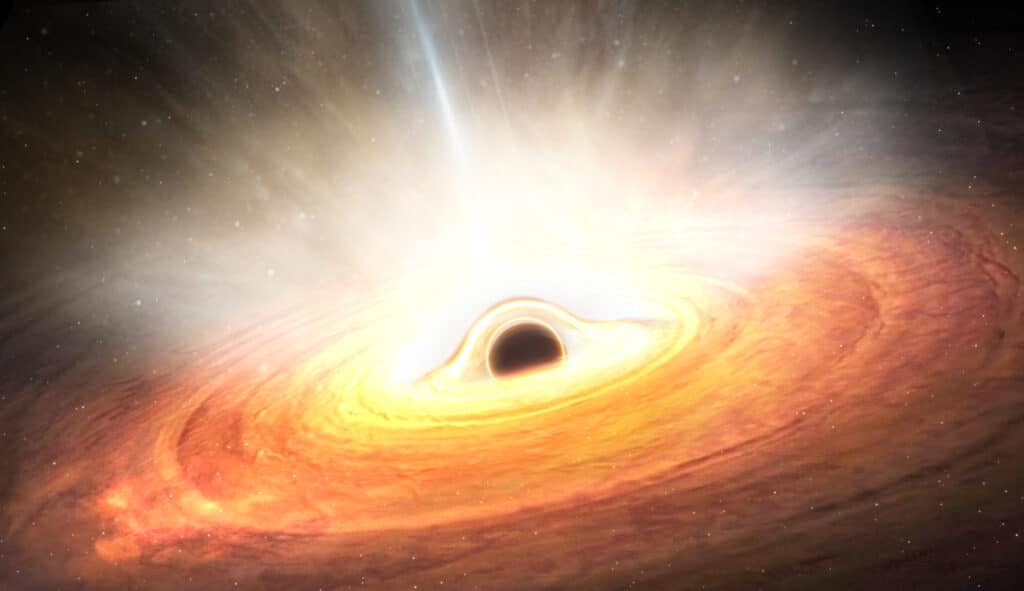A black hole can act like an upset baby throwing a tantrum when it’s time to eat. The European Space Agency’s (ESA) XMM-Newton space observatory has discovered a supermassive black hole in the act of metaphorically “flipping over the table” during its meal. This rare event, observed in a seemingly average galaxy known as Markarian 817, has significant implications for our understanding of how black holes interact with their host galaxies, particularly in the context of star formation.
Supermassive black holes reside at the center of most large galaxies, including our own Milky Way. These cosmic behemoths exert a gravitational pull so strong that they draw in gas from their surroundings. This gas forms a flat, rotating disk around the black hole, known as an accretion disc. As the gas spirals closer to the black hole, it heats up and emits light, eventually reaching a point where some of it falls beyond the point of no return and is consumed by the black hole.
However, not all the gas makes it into the black hole. Some of it is ejected back into space, in a manner likened to a messy toddler spilling food. In more extreme cases, such as the one observed with Markarian 817, the black hole expels gas at high speeds in all directions. This ultra-fast expulsion of gas, or “black hole wind,” has the power to clear out surrounding interstellar gas, effectively stopping the formation of new stars in a large region of the galaxy.

This phenomenon has been observed before, but typically in galaxies with very bright accretion discs that are drawing in matter at their maximum capacity. What makes the discovery in Markarian 817 remarkable is that it was observed in a galaxy that was “only snacking,” or not in a particularly active state.
“You might expect very fast winds if a fan was turned on to its highest setting. In the galaxy we studied, called Markarian 817, the fan was turned on at a lower power setting, but there were still incredibly energetic winds being generated,” says study author Miranda Zak (University of Michigan), an undergraduate researcher at the University of Michigan, in a media release.
“It is very uncommon to observe ultra-fast winds, and even less common to detect winds that have enough energy to alter the character of their host galaxy,” explains study co-author Elias Kammoun, astronomer at the Roma Tre University in Italy. “The fact that Markarian 817 produced these winds for around a year, while not being in a particularly active state, suggests that black holes may reshape their host galaxies much more than previously thought.”
The discovery was made possible through a combination of observations from NASA’s Swift observatory, which initially detected a significant drop in X-ray emissions from Markarian 817, and follow-up observations with ESA’s XMM-Newton, which revealed that ultra-fast winds from the accretion disc were blocking the X-rays. This detailed analysis demonstrated that the winds lasted for several hundred days and consisted of multiple components, each moving at several percent of the speed of light.

Astronomers suggest that black hole winds could be a critical factor in explaining why some galaxies, like the Milky Way, have large regions around their centers where few new stars form.
“Many outstanding problems in the study of black holes are a matter of achieving detections through long observations that stretch over many hours to catch important events,” Norbert Schartel, ESA’s XMM-Newton project scientist. “This highlights the prime importance of the XMM-Newton mission for the future. No other mission can deliver the combination of its high sensitivity and its ability to make long, uninterrupted observations.”
Scientists utilized data from XMM-Newton’s European Photon Imaging Camera (EPIC), supported by measurements from NASA’s Swift and NuSTAR missions. The study is published in The Astrophysical Journal Letters.













Comments